
17 Aug How to Avoid Negative Backlinks
In the modern age, businesses depend on their visibility in the most popular search engines – Google, Bing, and Yahoo. That often makes people research the concept of search engine optimization, which inevitably leads to the idea of backlinking.
Now, if you are a rising Internet entrepreneur, you might be wondering – what is backlinking and why is backlinking so important? If that is indeed the case, you can stop worrying right away because we’ve got you covered.
In the following paragraphs, we will not only explain backlinking but also give you advice on how to avoid negative backlinks so as to improve your website quality and search engine rankings.
What exactly is backlinking?
Backlinking typically refers to the practice of building links to your websites in order to boost your visibility on Google.
It generally comes in two forms: white-hat backlinking and black-hat backlinking.
White-hat backlinking is allowed by Google, and its popularity is now quickly growing due to its simplicity and availability. In a nutshell, white-hat backlinking is a form of SEO that people perform in accordance with Google’s terms of use.
The easiest way to perform white-hat backlinking is to publish guest posts or comments on niche websites with high domain authority and link back to your website. That will steadily increase your ranking score and help your website grow.
However, bear in mind that spamming websites with irrelevant comments that link to your site will not bring positive results. In fact, that is a form of black-hat backlinking.
Black-hat backlinking refers to a set of practices used to increase a website’s popularity in the search engine through means that violate certain terms of use. That is why this type of backlinking is forbidden and often results in severe punishment.
The most widespread black-hat tactics include the use of content automation, hidden text or links, private blog networks, link farms and even malware.
Google Panda and Google Penguin
In a bid to confront the abuses mentioned above, Google created its Panda and Penguin algorithms.
Google designed the Panda algorithm to refine the search engine’s ranking system. In other words, Panda improves the rank of high-quality websites and reduces the ranking score of low-quality pages, i.e., content farms.
In addition to that, they created the Penguin algorithm that focuses on differentiating between positive and negative backlinks.
The introduction of these algorithms means that positive backlinks increase your ranking score and your visibility. On the other hand, if you don’t learn how to avoid negative backlinks, your score, as well as your search engine popularity could suffer.
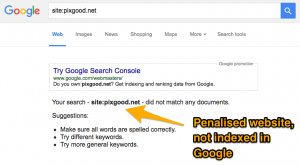
Therefore, not only do you need to strive to have positive backlinks, but you should also be actively trying to combat the plague of negative backlinks. This type of backlinks is generally found on generic websites that contain placeholder or machine-written text with unnatural links.
Negative backlinks come in all shapes and sizes. You can find them in the above-mentioned private blog networks and spammy domains. Aside from that, you can also find them in low-quality online directories that provide links to naive clients.
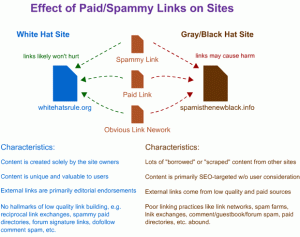
In the event that Google Penguin identifies your website links as suspicious, you will need to take action. Simply put, you can either remove or disavow the negative backlinks to improve your ranking score.
However, you also need to be proactive if you want your business to succeed in the increasingly competitive online environment. And, the best way to do that is to learn to avoid negative backlinks as much as you can.
You shouldn’t just sit around and wait for Google Penguin to find problems with your links. By the time Penguin actually discovers you, you will have lost countless site visitors and potential clients. And don’t get your hopes up – the algorithm will inevitably find any abuses.
Now, you’re probably thinking: this is all fine and dandy, but what can – and should – I do to avoid negative backlinks and keep my website optimized? Worry not because if you continue reading, we will explain everything.
HOW TO AVOID NEGATIVE BACKLINKS
Before you do anything, you first need to check if your website has any negative backlinks at all. That means you’ll need to invest some time to check the quality of your links.
Now, you might think that it’s not worth your time. After all, Google Penguin will eventually do the work for you. However, that’s simply not true. In order to keep your website optimized, you need to find the negative backlinks on your own and act accordingly. Nevertheless, before you can take any action, you must learn how to differentiate the backlinks.
How to differentiate between good and bad backlinks
In order to learn how to avoid negative backlinks, as well as find them by yourself, you need to understand the difference between good and bad backlinks. The easiest way to do this is to ask yourself the following questions:
Is the link niche-relevant to your business?
In other words, is the website or the specific page that contains the backlink related to your content? If the answer to this question is no, you’ll need to move on to the next one.
What’s the website and the page with the backlink in question like?
If you have a link to your website posted on a credible or prestigious website, like Yahoo or Forbes, the backlink is certainly not negative.
However, if the link is located on a website with poorly written content and/or countless links, it’s probably a negative backlink. In all likelihood, the website has fake metrics and only serves to sell links.
To recap, a spammy link is a backlink that is completely unrelated to your business. Aside from that, it is also located on a website that encourages linking in poorly written text or irrelevant content.
Furthermore, the worst type of a spammy link can be found on web pages with absolutely no content on them. These are usually directories or user profiles.
With that in mind, here are a few helpful tips that will allow you to identify suspicious links:
Examine the websites that link to you

If the websites have the default WordPress theme, it could mean that no effort was made to design them. In such cases, Google will be quick to find and label their links as spammy.
Naturally, not all of the default-themed WordPress sites are suspicious. In fact, many of them are just fine, but this might be the first sign that something is not right.
Examine the content of those websites
That means that you will have to check the content published on the websites that link back to you. If they contain generic text or lack coherence, the website is probably part of a company selling backlinks.
Focus your attention on the website content

By now, you have checked and confirmed that the texts on the websites linking to you are at least sensical. So, now you can start comparing different websites that link to you.
It’s reasonable to find many websites within the niche linking to your content, but if the websites contain identical or almost identical texts, you might be in trouble. That could mean that they were specifically created with the purpose of providing backlinks.
Beware of the links from foreign websites
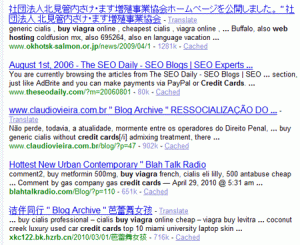
Try to find out where the website servers are located and who their target audience is.
If the websites are hosted in a far-off country with little ties to your business, they probably contain negative backlinks. In other words, if they are located in China or Russia, and they link to your small Canadian business operation, you should consider taking action against their backlinks.
Links in comments are usually worthless
Apart from that, there’s a general rule that says that links placed in the comments are usually worthless.
These backlinking comments are usually automated and written by bots, even though they are becoming increasingly more complex and personalized.
Links that are overly optimized may signal trouble

This one is a bit tricky.
Nowadays, most people understand the importance of SEO and focus on optimizing their links and websites. That is a relatively easy way to improve site rankings.
However, if the links and websites seem to be overly optimized and they overuse keywords, this might be another warning signal for you.
In any case, you shouldn’t focus too much on this. Although this can be one of the signs that point to negative backlinks, it may also be a pure coincidence that the links are overly optimized.
Many website owners are self-taught SEO “experts,” and they may just be using the keywords too keenly. Most people still don’t understand the concept of content over-optimization.
If you don’t find any negative backlinks, chances are your business is just fine. In that case, you don’t have to worry about any of this.
HOW TO DEAL WITH NEGATIVE BACKLINKS ON YOUR WEBSITE
If you’ve been reading this article and asking yourself how you can get rid of negative backlinks, scroll down. You will soon find out what you can do to improve your site rankings.
Disavow the links
The most popular way to deal with backlinks is to disavow them.
By disavowing a link, you’re effectively asking Google not to take the link into account when assessing your website.
That is a pretty straightforward process. However, in case you’re not sure how to do this, Google has a handy article that precisely explains what you need to do. You can find it here.
Ask the website owners to remove the suspicious backlinks
One thing you can easily do is contact the website owners and politely ask them to remove the link. Unfortunately, if they are indeed negative backlinks, the owners might not respond to your messages, or they might even ask you to pay for the removal of the link.
If that happens, disavow the links immediately, because this is a flat-out confirmation that it’s a negative backlink.
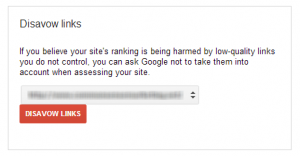
Alternatively, you can always delete a few website pages so as to avoid negative backlinks. However, this should never be your first option, since you may effectively lose large portions of your website.
Start a new website
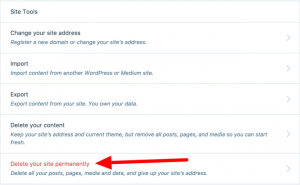
If you think that your website is riddled with bad backlinks, consider starting a new website. Of course, this option works far better for relatively new companies that can change their domains without much trouble.
Let the professionals deal with your problem
If all else fails, you can always find experts that are willing to do the job for you. There are many companies that will check the quality of backlinks for you, and they can even act to keep your ranking score high by helping you avoid negative backlinks.





